Online Roof Quote for Homeowners //
Your Asphalt Shingle
Roofing Experts
Asphalt Shingle Roofs // Versatile and trustworthy, asphalt shingle provides options for most homes.
Asphalt shingles are the most common type of shingle roofing used in the United States today. Homeowners have a choice between three-tab shingles and architectural shingles. Both come in a variety of colors and can be installed on most homes, although both types of shingle have different strengths.
Benefits of Asphalt Shingles

Excellent Value
Provides reliable protection for your home and comes in a wide variety of looks at reasonable prices.

Fire Resistant
Asphalt shingle has a class A fire rating to protect your home.

High Impact Rating
Class 4 impact rating, which means that it is highly resistant to damage.

Wind & Weather Resistant
Shingles are available with heavier weights and treatments to provide protection against extreme weather.
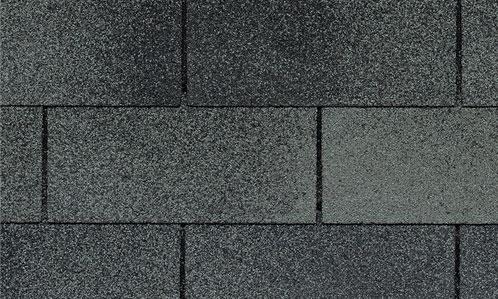
Three-Tab Shingles
Three-tab shingles are distinguished by cutouts, or tabs, made along their long lower edge that make each single piece look like three shingles. Three-tab shingles have been around a long time and are still the most economical and most popular shingle today. They weigh less and have a consistent shape and size. Three-tab shingles are also less expensive and should last for around 30 years. . . . . . . . . . . . . . . . . . . . . . . . . . . . . . . . . . . . . . . . . . . . . . . . . . . . . . . .
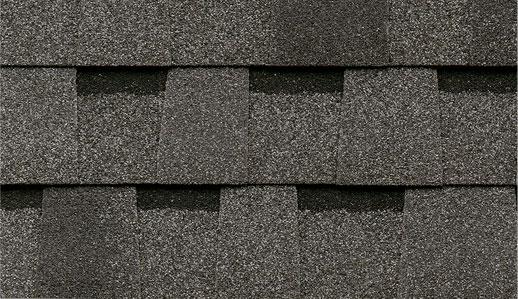
Architectural Shingles
Architectural asphalt shingles are single shingles that come in a variety of shapes and sizes. They are heavier, have better longevity and cost more than 3-tab shingles. Since these shingles are heavier they can stand up to stronger winds and weather and may make your home eligible for a reduced homeowner’s insurance premium. Likewise, they may also increase the value of a home. Architectural shingles can last about 40 years. . . . . . . . . . . . . . . . . . . . . . . . . . . . . . . . . . . . . . .
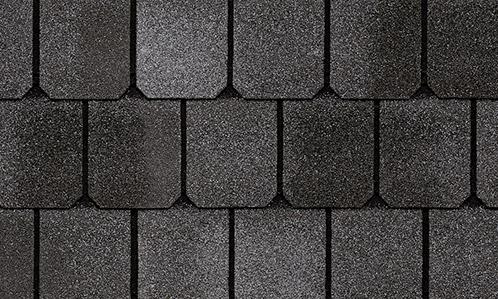
Slate Shingles
Asphalt slate shingles combine the classic appearance of slate with the versatility and strength of asphalt shingles. Asphalt slate shingles are designed and treated for high-resistance to wind, rain, snow and extreme temperatures to protect your home and your family from the elements. These shingles are cut with curved corners and are available in a variety of shades to provide your home elegance but without the hassle and expense of traditional slate shingles.
Other roof components to consider.
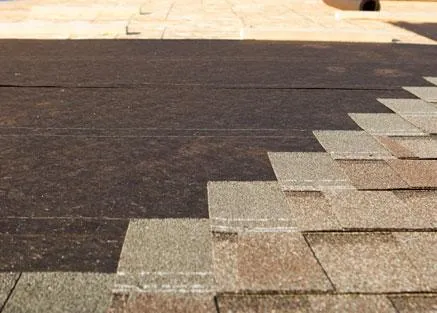
Underlayment
Underlayment is a material that rests between your roof deck and the shingles. It provides an additional layer of weather- and water-proofing. Roofing felt is the traditional underlayment and is made from a combination of asphalt and felt. Synthetic underlayment is becoming a more popular choice because it doesn’t absorb water at all, providing better protection for your home.
Required for Roof Installation // Multiple Options Available

Starter Shingle
Starter shingle is a row of shingle that is laid along an eave or rake line on a roof. This reduces the need to cut shingles to fit angles. It also reduces waste and installation time.
Required for Roof Installation
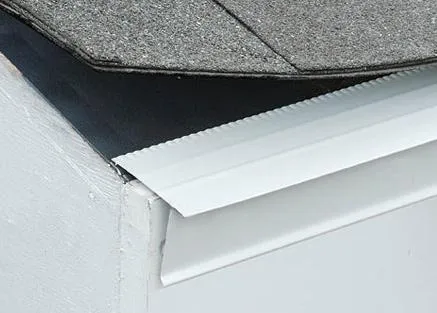
Drip Edge
A drip edge is placed along the eaves and rake edges beneath the underlayment. It funnels water from between the shingles and the underlay to your gutter. Without a drip edge, there is a risk that any drainage will flow behind the gutter and cause damage to your home.
Required for Roof Installation // Custom Color Options Available
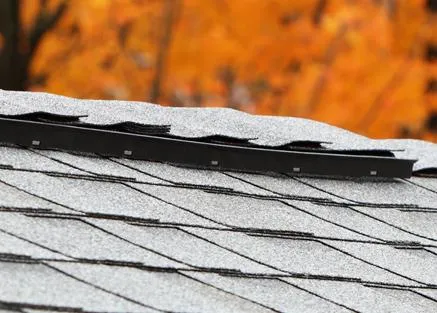
Ventilation
Roof ventilation is essential to protecting your home – it allows circulation of air so that hot air can escape in the summer, and more importantly, stops heated air from condensing and causing moisture damage or mold build-up during colder winter months. Ridge vents are the recommended choice due to the continuous ventilation provided along the roof. Other options like turtle vents are also available.
